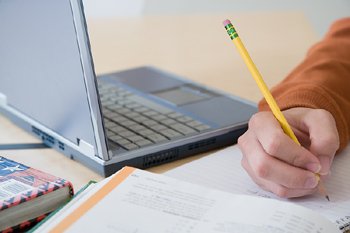The Gilroy Unified School District Board of Education unanimously voted Thursday to continue exploring the possibility of a joint city-school sales tax, which could yield up to $11.5 million annually depending on a 0.25, 0.50 or 1 percent local sales tax increase.
GUSD trustees will gauge support from local community and business leaders, collect more data and present their situation to City Council members during the June 4 City Council meeting.
“Disheartening” comments made to the Dispatch by city councilmen Bob Dillon and Dion Bracco – who expressed Wednesday their immediate opposition to a joint city-school sales tax – ignited a volley of replies from several GUSD trustees when the topic was discussed Thursday.
School officials made it clear: They’re not throwing in the towel until the community, “including City Council,” hears them out.
“This is not just a district problem,” said trustee Rhoda Bress. “This is a community problem. Educating the City Council will go a long way.”
“It’s disheartening to hear,” said trustee Fred Tovar, of the comments made by Dillon and Bracco. “The more information we can provide to City Council is only going to benefit us.”
Before anybody “rushes to judgment,” trustee Jaime Rosso hopes the community – “including City Council” – will give due diligence to the district’s efforts to weather a “severe financial crisis.”
“We’re not saying this is the only option, but we certainly would appreciate the consideration of what can be done,” he continued.
With GUSD facing a possible $6.9 million cut in state funding next year, Trustee Dom Payne said he doesn’t see another option “besides going all the way” in the effort to explore revenue-enhancing measures for the district.
“It cannot hurt to constantly refer back to the fact that we are not doing this out of any other reason, other than we’re in a situation where we need to take some sort of action to alleviate the strains we’re under,” he said. “The facts have to be re-stated and re-stated. I don’t think it can hurt to make that presentation to (City Council).”
Asking Gilroy voters to consider a joint city-school sales tax is being explored by GUSD for the first time as the district braces for a possible $2.9 (the “best case scenario”) or $6.9 million (the “worst case scenario”) cut in state funding next year. The district has not yet made a motion to put a tax measure on the November ballot; a move that could help prevent future class size increases and salary cuts.
Having already taken a four percent salary cut this year, Gilroy teachers are looking at possible 10 furlough days in 2012-13. This equates to a 5 percent pay cut.
Of these 10 proposed furlough days, 3 are staff development days and 7 are instructional days. This is not in addition to the 8 furlough days teachers had to take this year.
In an effort to explore revenue-enhancing measures, GUSD contracted TBWB Strategies – a San Francisco-based consulting firm – in April for the flat rate of $16,500 to conduct a parcel tax feasibility study.
TBWB Strategies returned Thursday with three options that include a flat rate parcel tax, a variable rate parcel tax or a joint city-school sales tax. Trustees have now shifted their focus from the parcel tax idea and are aiming for the option with the highest return.
Compared to the flat rate and variable rate parcel taxes – which require a two-thirds vote and will yield an annual $1 million or $2 million respectively – the joint city-school tax carries the highest revenue potential, according to TBWB Strategies.
Depending on the percentage hike, a joint city-school sales tax will raise the following revenue annually:
• 0.25 percent sales tax increase: $2.8 million
• 0.50 percent: $5.6 million
• 1 percent: $11.5 million
Trustee Jaime Rosso, who serves on the district’s parcel tax subcommittee, said the joint city-school sales tax is the “obvious option…because the other two options don’t get us to the amount we need.”
One “complexity” that has trustee Pat Midtgaard concerned is identifying the “outch” point for locals and out-of-town shoppers who are already paying an 8.25 percent sales tax – an amount Councilman Bob Dillon feels is “far too high.”
“What is the threshold?” asked Midtgaard, who also alluded to the possible passage of Gov. Jerry Brown’s $8.5 million tax initiative, which could go before voters in November 2012. “This would be adding to an already considerably high tax. And when you are buying something big, that can chase buyers out of the community – which is a big deal when you’re buying a car, for instance. We need to be sensitive to this. What is that point at which the consumer says ‘no’?”
If the district moves forward and surveys approximately 400 people by phone over the course of three to four evenings, the poll would test different tax rates “to get a feeling for what people would support,” explained TBWB Partner Charles Heath, who presented to trustees Thursday.
TBWB estimates polling will cost GUSD between $24,000 and $30,000, depending on the sample size and survey length. But if the district can’t get City Council’s support in the effort and decides to “pull the plug” before the survey actually begins, the preliminary groundwork “would be a small, small fraction of the cost,” said Heath.
As for how the survey is conducted, TBWB partners with a firm that specializes in data collection and will conduct the calls “in a way that gets you scientifically reliable results,” Heath explained. The standard sample size is 400 voters, which yields a margin error of fewer than 5 percent, according to Heath. The survey will be constructed in a way that gives voters an idea of the potential use of funds, such as how much tax revenue the city would keep, and what the district will use its portion of money for – i.e., restoring instructional days and making up for students’ lost academic opportunities.
“There’s a big potential return on investment, and if you don’t do the research you’ll never know what’s possible,” Heath told trustees. “And there’s a gambling element to it, I’ll admit it. But we’re talking over the life of the tax, millions of dollars.”
The school board unanimously voted to gather more data and meet with City Council during the June 4 City Council meeting. The deadline for City Council to place the measure on the November 2012 ballot is Aug. 10.
“We can’t just throw it up in the air and say, ‘OK, whatever happens, happens,’” resolved trustee Rosso. “If we are going to take the iniative at the local level and do more than just wait for whatever the state dishes out for our district, then it means that we need to step up to the plate here and have a conversation and get involved, and hopefully the leaders in the community will also see what we see.”
Click here to read more details about the joint city-school sales tax, how recent school tax measures fared and a synopsis of GUSD’s budget scenario.













